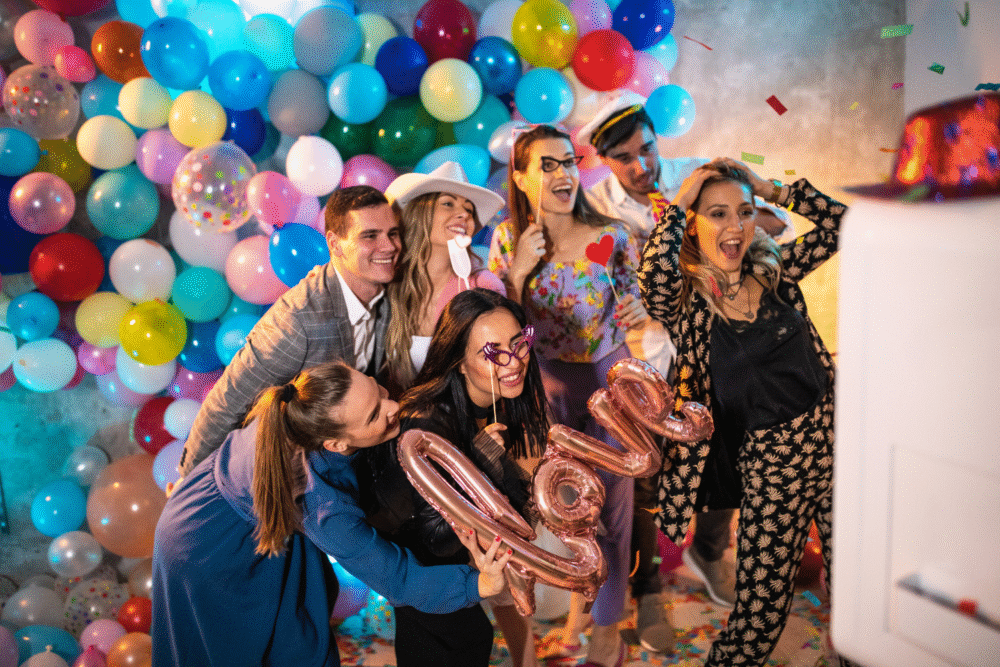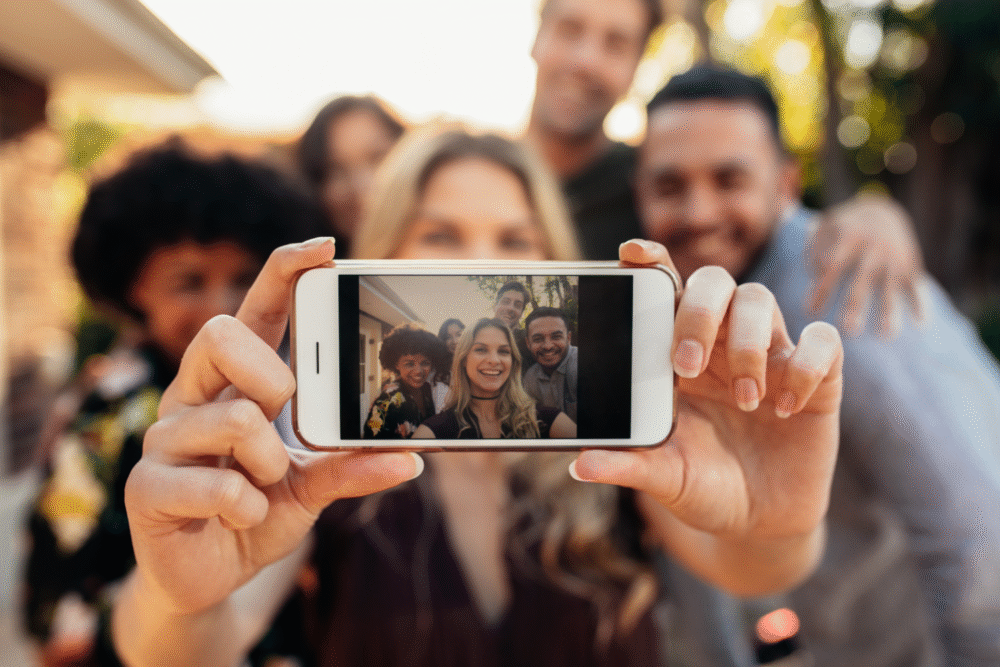Learn how technology reshapes the ways we create, store, and revisit our most treasured memories.

Technology has transformed the way we capture and preserve personal memories, shifting from analog methods to digital solutions like photos, videos, and cloud storage. These tools offer greater convenience, instant sharing, and new ways to enhance and recall meaningful moments. For readers, understanding this shift helps in managing digital keepsakes effectively while appreciating the emotional impact technology has on memory formation and sharing.
1. Digital photos replaced traditional albums for easier sharing and access.

Digital photos have largely replaced traditional albums, as they allow us to capture and share moments with unprecedented ease. Unlike printed photographs that are often stored in physical albums or boxes, digital photos are stored on devices and online platforms, making them easier to organize and share. The transition to digital photography has encouraged people to take more photos, as they do not need to worry about the costs of printing or developing film. This shift has made capturing everyday moments more commonplace.
For everyday readers, digital photos offer the incredible advantage of being easily accessible and shareable at any given time. To ensure these digital memories last, consider regularly backing them up on multiple platforms such as external hard drives or cloud services. This step is crucial to avoid losing cherished moments due to technological failure or accidental deletion. Digital photos promise convenience, but don’t forget to safeguard them just as you would a treasured physical album.
2. Cloud storage allows memories to be saved and accessed anywhere.

Cloud storage revolutionizes how we save and access our cherished memories by offering a virtual space where photos, videos, and important documents can be stored safely. This technology allows users to sync their devices, so memories are always within reach, regardless of where they are. Cloud services typically come with automated backup options, providing a safety net against data loss on personal devices.
Everyday users benefit from cloud storage’s ability to access their archives from any device connected to the internet. While it provides excellent convenience, it’s wise to periodically check cloud account settings and enable two-factor authentication for added security. By understanding and utilizing cloud storage effectively, consumers can enjoy peace of mind knowing their memories are protected and accessible anywhere.
3. Social media transformed private moments into public experiences instantly.

Social media has significantly altered how we experience and recall our memories by turning many private moments into public experiences. Platforms like Instagram and Facebook allow users to share snapshots of their lives with a vast audience instantly, creating a digital journal that others can engage with. This has changed the way we perceive personal memories, making them more about engagement and validation.
For those new to social media, it’s important to remember that not every moment needs to be shared online, and privacy settings should be carefully managed. This will help maintain control over which memories are shared and who can view them. Being selective can preserve the authenticity of memory-making, allowing individuals to connect deeply with the moments that truly matter.
4. Video calls enable real-time connection despite physical distances.

Video calls have deeply impacted how people stay connected by allowing face-to-face communication, regardless of physical distances. Applications like Zoom, Skype, and FaceTime make it easy to share real-time experiences with loved ones, adding a sense of closeness that was previously unavailable. This technology ensures that connecting with others is more engaging and personal than traditional phone calls.
Incorporating video calls into family traditions, such as virtual reunions, can sustain relationships over long distances. Remember to ensure a stable internet connection and familiarize yourself with the platform’s features to make the most of these exchanges. Thoughtfully employing video calls as part of regular communication routines can help maintain strong social bonds even when miles apart.
5. Smartphones capture spontaneous moments with unprecedented convenience.

Smartphones are ubiquitous tools that enable the capture of spontaneous moments at the touch of a button. These devices, equipped with advanced camera technology, allow users to take high-quality photos and videos anywhere, capturing life’s fleeting moments as they happen. The convenience and portability of smartphones make them indispensable for memory preservation in today’s digital age.
To maximize the value of your smartphone photography, practice organizing and decluttering digital files routinely. This will make it easier to find specific moments when you want to look back, and ensure that your device retains enough storage space for future adventures. By being intentional in how you manage your smartphone’s capabilities, you can create a meaningful digital memory collection.
6. Photo editing apps enhance and personalize visual memories creatively.

Photo editing apps have taken visual memory preservation to new creative heights by allowing users to enhance their images with filters, effects, and other adjustments. These tools offer users creative freedom in how they wish to present their memories, from subtle tweaks to artistic transformations. With these apps, even novices can create visually appealing images that reflect individual styles.
While these tools promote creativity, it’s crucial to differentiate between edited images and original moments. Always keep a copy of the unaltered image if you wish to preserve the authenticity of a captured memory. By balancing creativity with authenticity, you can enjoy both the aesthetic enhancements offered by editing apps and the true essence of your cherished moments.
7. Online platforms preserve stories through written posts and shared experiences.

Online platforms have expanded the ways we preserve and share stories through written posts and shared experiences. Blogs, forums, and social media sites act as digital archives where individuals can document their thoughts and experiences in real-time or reflectively. These written records add a literary layer to memory preservation, complementing visual and audio memories.
To enhance your storytelling experiences, consider periodically revisiting and organizing your posts. This practice ensures your digital narratives stay coherent and relevant to your evolving personal story. By actively managing your online presence, you can create a rich tapestry of memories that narrate the story of your life, as experienced and shared in the digital world.
8. Digital calendars and reminders help commemorate important dates effortlessly.

Digital calendars and reminders have made it incredibly simple to keep track of important dates, ensuring that anniversaries, birthdays, and special occasions are never forgotten. These tools offer automated alerts and notifications, helping users maintain their schedules and honor significant moments effortlessly. With the capability to sync across multiple devices, keeping track of important dates is now more seamless than ever.
For those who frequently juggle multiple commitments, utilizing digital calendar features like color coding and categorizing events can enhance organization and recall. Integrating this practice into your routine creates a reliable memory aid and strengthens your ability to commemorate important dates without stress or oversight.
9. Virtual reality recreates immersive experiences from treasured moments.

Virtual reality (VR) offers a novel way to recreate immersive experiences from cherished memories, adding a new sensory dimension to memory recall. This technology allows users to relive moments in a fully interactive, 3D environment, providing a depth of experience traditional media can’t match. VR can recreate past events with clear visuals and sounds, making them feel almost tangible.
Those interested in enhancing memory recall through VR should explore accessible software and platforms to start integrating it into their memory collection. Ensuring the equipment meets your needs is essential in maximizing this experience. By embracing VR, you can transform static memories into dynamic, immersive experiences that evoke deeper emotions.
10. Voice recordings and messages add emotional depth to memory keeping.

Voice recordings and messages bring an added layer of emotional depth to memory keeping by capturing the unique sound of someone’s voice alongside their words or melodies. This auditory dimension adds richness to memories that images alone cannot always convey. Being able to hear a loved one’s laughter, a heartfelt message, or a special song can foster a deeper connection to the past.
To keep these auditory memories safe, create backups on physical storage devices or cloud platforms. By doing so, you’ll ensure these moments remain accessible for future listening. Regularly collecting and preserving voice messages can offer a comforting way to relive positive interactions, enhancing the spectrum of your digital memory collection.
11. Automated backups protect memories from accidental loss or damage.

Automated backups are crucial in protecting digital memories from unexpected loss or damage. These systems regularly save copies of your files onto different storage locations such as external hard drives or cloud services, ensuring that even in the event of hardware failure, your precious photos and documents are preserved. Automated backups save time and reduce the risk of human error in data management.
Users can schedule regular checks to confirm their backup settings are correctly configured and updated to truly maximize this protective function. A small, dedicated effort to automate backups can yield significant peace of mind, safeguarding your digital relics against unforeseen circumstances.
12. Collaborative albums allow groups to contribute and relive shared moments.

Collaborative albums have transformed how people contribute to and relive shared moments, enabling groups to pool their photos and videos into a single collection. Platforms like Google Photos and Apple Photos offer options for sharing albums with others, making group event collections more comprehensive and accessible. This provides a communal space for everyone to share their perspectives and stories of a particular event.
For those looking to create inclusive shared albums, set guidelines on how to upload and tag contributions to maintain coherence and organization. This practice supports engagement and facilitates the exchange of memories, allowing each contributor to partake in a richer, collective archive of moments spent together.
13. AI-powered organization tools categorize memories for simple retrieval.

AI-powered organization tools streamline the classification and retrieval of digital memories, offering an uncomplicated method for managing large collections of photos, videos, and documents. Using algorithms to recognize faces, locations, and objects, these tools can automatically sort and categorize files, making it easier to locate specific moments without sifting through endless archives.
Users who leverage these tools can experience more efficient memory management and retrieval. Invest time in setting up a system that works for your organizational preferences, ensuring that your memories are just a search away. By embracing AI technology, you can maintain a curated and easily navigable digital memory library, preserving your cherished moments’ accessibility and relevance.
